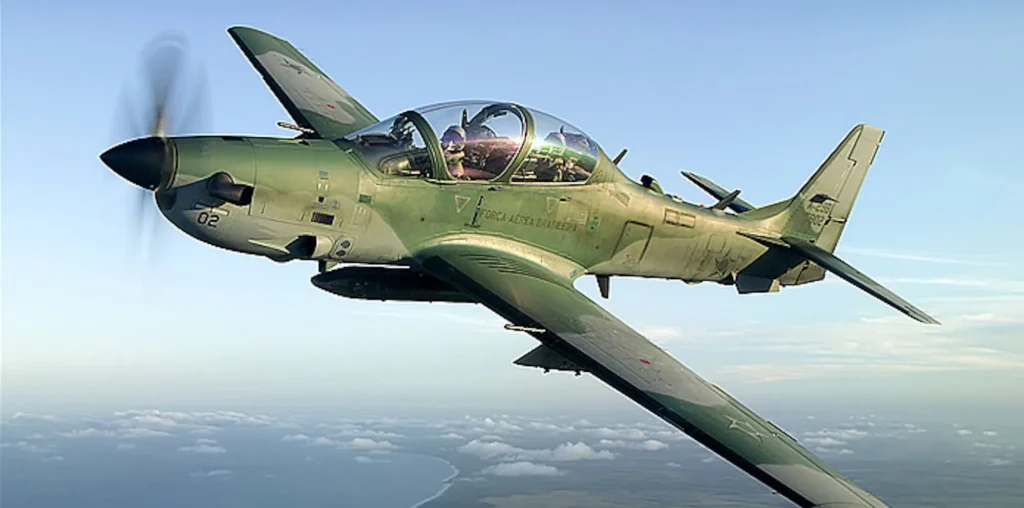A routine training day turned dramatic for the Brazilian Air Force on November 1, 2024. Two EMB-312 Tucano aircraft collided mid-air near Pirassununga, São Paulo, sending shockwaves through the military aviation community. This incident highlights the constant risks faced by military pilots and the crucial role of safety measures in training programs.
The collision occurred during a standard instructional flight for Air Force Academy cadets. One aircraft plummeted into a sugarcane field, while the other managed to land safely. The quick-thinking cadet piloting the crashing plane successfully ejected, escaping with his life thanks to the aircraft’s advanced ejection system.
This close call underscores the importance of rigorous training and top-notch safety equipment in military aviation. The Tucano aircraft, a staple in Brazilian pilot training since 1983, is designed to prepare cadets for the challenges of flying fighter jets. Its similarity to more advanced aircraft cockpits makes it an invaluable tool in pilot education.


The incident has broader implications for the Brazilian Air Force. Coming just nine days after another training accident involving an F-5M fighter jet, it raises questions about the overall safety of military flight training programs. These back-to-back incidents may prompt a comprehensive review of training procedures and aircraft maintenance protocols.
As investigators from the Center for Aeronautical Accident Investigation and Prevention (CENIPA) begin their work, the aviation community watches closely. Their findings could lead to significant changes in how the Brazilian Air Force conducts its training operations, potentially influencing military aviation practices worldwide.

